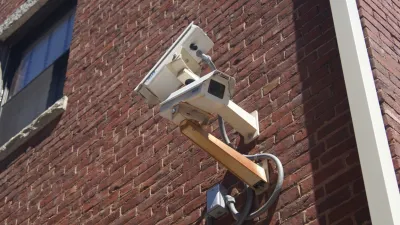Despite its insistence that the technology would only target criminals, Dallas Area Rapid Transit (DART) should reconsider using facial recognition software to address crime. The potential for abuse may be too high.

Prompted by concerns about crime, Dallas' DART system is experimenting with facial recognition software linked to an offender database. Although officials likely have good intentions, Michael A. Lindenberger is worried about the creep factor: will riders be logged and tracked every time they use the system?
The question is whether DART will restrict its use of the technology to criminal situations alone. "DART says it will build its own database of names and photos, based on incidents in which DART riders come to the attention to DART police. Maybe you get busted for not paying your fare. The police take your picture, and in you go to the database. You get in a fight on the train, and in you go."
While Lindenberger's concerns may be unfounded right now, facial recognition could become yet another way to assault citizens' privacy and anonymity. "Computers at DART could be building a database full of information about each of its riders, forevermore. And someday, if DART wants to find me at 8:30 on a Monday morning, it won't even have to ask its cameras to help. It will have years' worth of my travel habits, and will simply make a guess. It'll be a pretty good one."
FULL STORY: DART should scrap its creepy plan to use facial recognition software

National Parks Layoffs Will Cause Communities to Lose Billions
Thousands of essential park workers were laid off this week, just before the busy spring break season.

Retro-silient?: America’s First “Eco-burb,” The Woodlands Turns 50
A master-planned community north of Houston offers lessons on green infrastructure and resilient design, but falls short of its founder’s lofty affordability and walkability goals.

Delivering for America Plan Will Downgrade Mail Service in at Least 49.5 Percent of Zip Codes
Republican and Democrat lawmakers criticize the plan for its disproportionate negative impact on rural communities.

Test News Post 1
This is a summary

Test News Headline 46
Test for the image on the front page.

Balancing Bombs and Butterflies: How the National Guard Protects a Rare Species
The National Guard at Fort Indiantown Gap uses GIS technology and land management strategies to balance military training with conservation efforts, ensuring the survival of the rare eastern regal fritillary butterfly.
Urban Design for Planners 1: Software Tools
This six-course series explores essential urban design concepts using open source software and equips planners with the tools they need to participate fully in the urban design process.
Planning for Universal Design
Learn the tools for implementing Universal Design in planning regulations.
EMC Planning Group, Inc.
Planetizen
Planetizen
Mpact (formerly Rail~Volution)
Great Falls Development Authority, Inc.
HUDs Office of Policy Development and Research
NYU Wagner Graduate School of Public Service




























